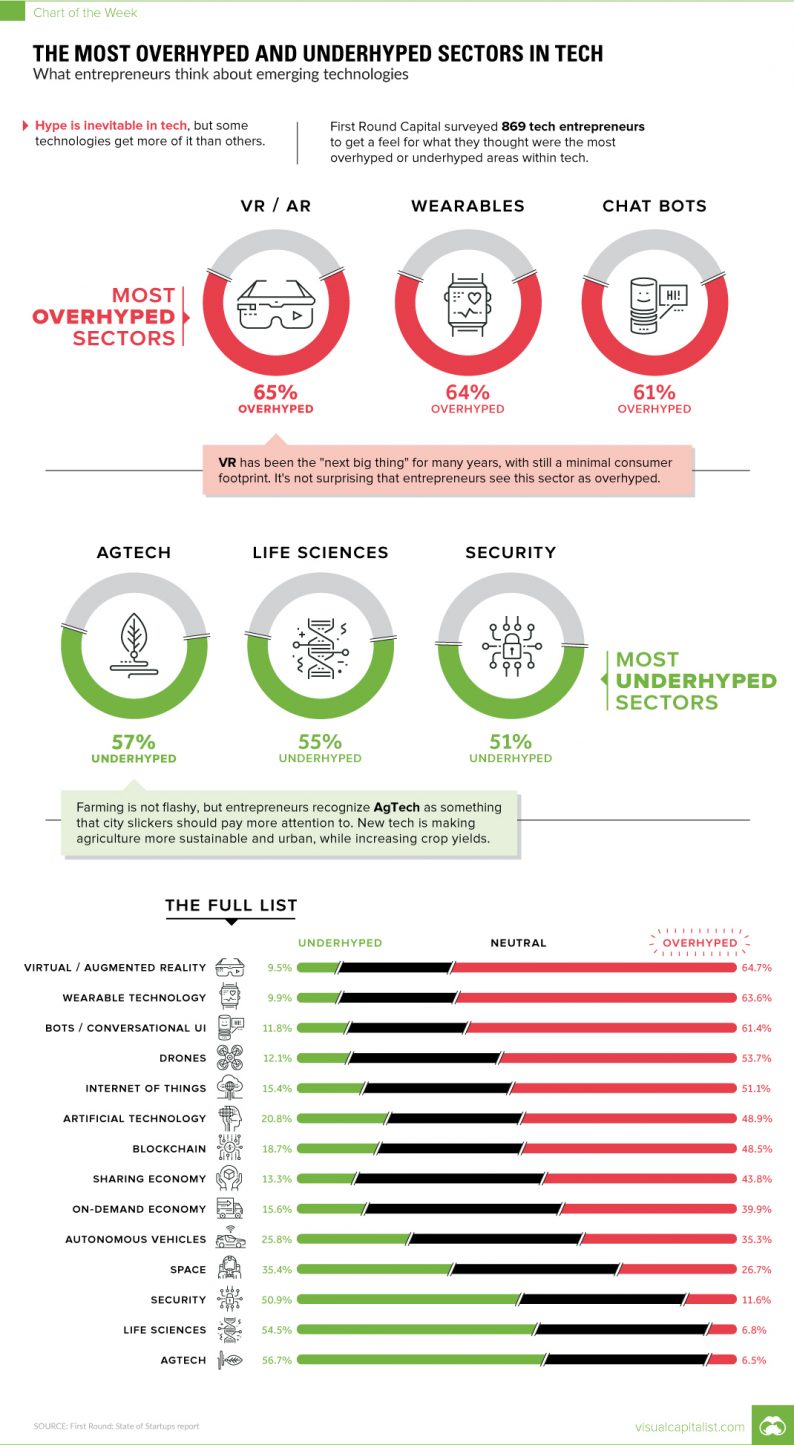
Founders are at the very ground level, and their pursuits have a ripple effect on the entire startup ecosystem.
As a result, how entrepreneurs think about different subsectors within tech is of utmost importance. Not only do their perceptions influence what projects they themselves choose to build, but how founders allocate their time and energy may also be a useful gauge of where future economic potential lies.
Today’s chart focuses on what entrepreneurs think of specific technologies, using data from a survey of 869 entrepreneurs that was done by First Round Capital.
Seeing Through the Hype
In the survey, entrepreneurs were asked to give their opinions on 14 different technologies, on whether they were overhyped or underhyped. Entrepreneurs could also answer “neutral” to any of the questions.
Here are the three technologies that were considered the most overhyped:
1. VR/AR: 65% Overhyped
VR has been the “next big thing” for many years, with still a minimal consumer footprint. It’s not surprising that entrepreneurs see this sector as overhyped. For companies like Facebook and Magic Leap to reverse the perception of VR/AR, they’ll need to get consumers adopting these technologies at a faster rate.
2. Wearables: 64% Overhyped
When Google Glass first came out in 2013, hype about a future filled with wearables seemed inevitable. Now it’s almost five years later, and wearables haven’t delivered on the scale that many entrepreneurs thought was possible.
3. Chatbots: 61% Overhyped
Will chatbots really change customer service, health, and other industries? Most entrepreneurs seem to be a little skeptical about their potential impact.
Diamonds in the Rough?
Entrepreneurs also thought some sectors deserve more attention – and this is where there may be some potential opportunities for investors or new founders.
1. Agtech: 57% Underhyped
Farming is not flashy, but entrepreneurs recognize agtech as something that city slickers should pay more attention to. New tech is making agriculture more sustainable and urban, while increasing crop yields.













Leave A Comment